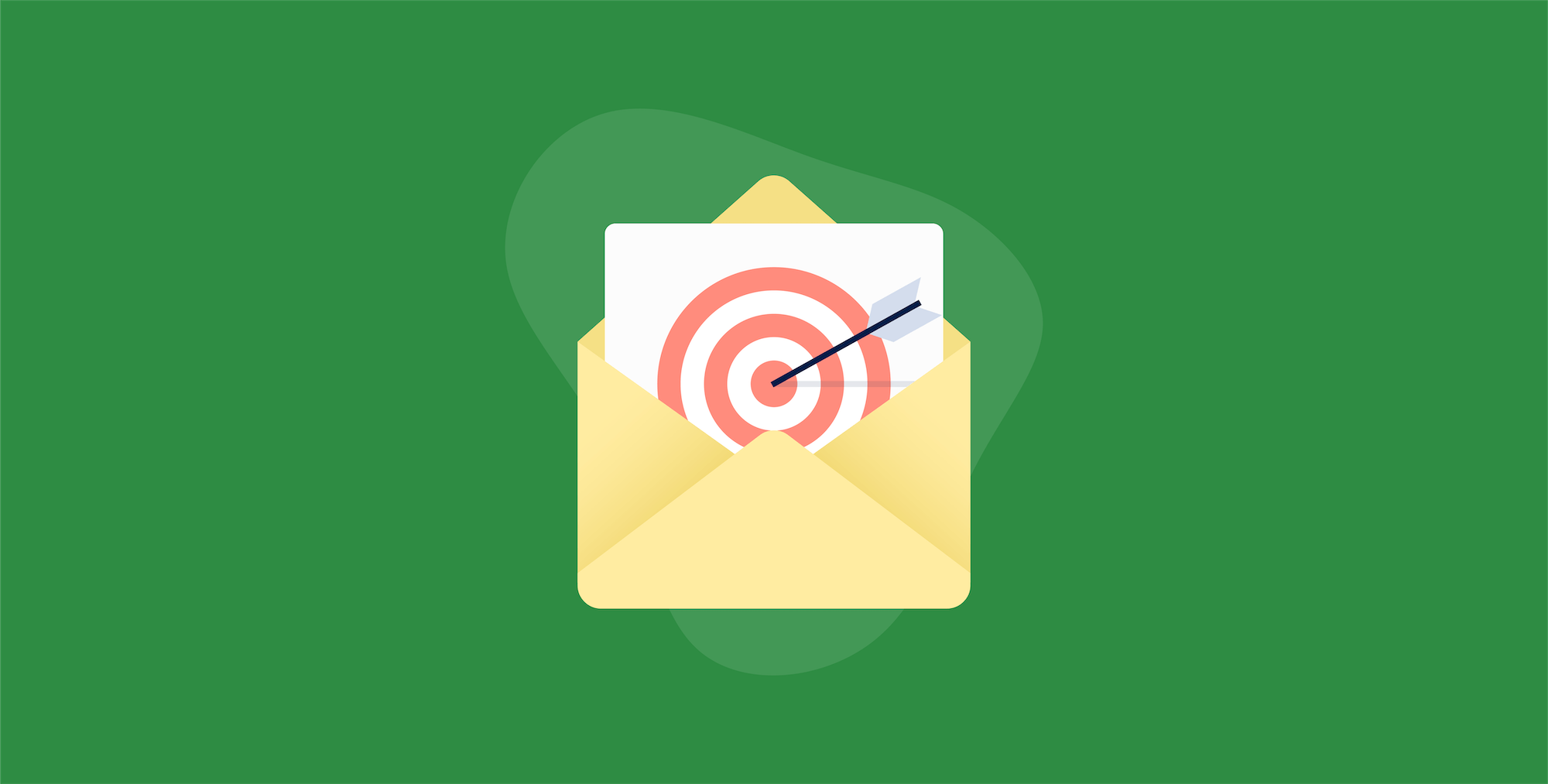A new customer just bought something from you for the first time. Congratulations! Now the really hard work begins – building customer relationships with those first-time buyers to bring them back to buy again and again.
Long-time retailers know the first purchase is the easiest one. They don’t even think of new buyers as customers until the second, third or fourth purchase. Even then, you can’t assume your customers will come to you first next time before checking out other brands.
Who’s coming back to buy again? Not as many as you think
Loyal customers – the ones who buy from you regularly or exclusively – are few and far between. The esteemed management consulting firm McKinsey & Co. found in a recent report they make up only 13% of shoppers.
Another 29% are “vulnerable repurchasers” – consumers who shop other brands but ultimately repurchase from the original brand. The remaining 58% switch to different brands.
How post-purchase emails can stop the switch
Your promotional emails spread product news and offers to a wide audience, but they won’t persuade more customers to keep buying from you. That heavy-duty job calls for a special class of automated messages called post-purchase emails.
As the name implies, these are special emails you send only to customers who have purchased from you. Although post-purchase emails serve practical purposes, they also help you build something intangible—stronger relationships with your customers.
The customer relationship is a key part of engagement and loyalty. A good relationship makes customers notice your emails in the inbox before your competitors’ emails, and prefer your brand over others.
In fact, customer relationships are becoming more important than brands in company valuations, a Harvard Business Review study found. From 2003 to 2013, brands dropped from 18% of a company’s value to 10%, while customer relationships doubled, from 9% to 18%.
Digital technology is fueling that switch in part because email and search marketing make it easier for customers to research a wide range of brands instead of relying on the same brands over and over.
5 post-purchase emails to drive customer engagement and return visits
You have an almost infinite variety of post-purchase emails to choose from, depending on your purchase process, products and customers. Below are five that you can add easily to your email program, provided you have an email platform like ShippingEasy, which allows easy integration between your e-commerce store and email communications.
1. The “Thank You” email
This email helps create a good customer experience. It won’t replace transactional emails like order and shipping confirmations, but it adds that extra touch that shows customers you appreciate their business.
The below email is a basic and easily imitated example. Simple and straightforward messaging, a photo of what was ordered, and information on next steps (including a tracking button) makes this a clear communication.
If we were to suggest a couple changes, it would be to add photos and/or descriptions of possible product recommendations for next time. Though there is a header that mimics the website sections, quality product images and prices could encourage an immediate repeat purchase or, at minimum, ideas for the customer’s next purchase.
In ShippingEasy’s Customer Marketing platform, you can enable our popular automated “First Time Buyer” welcome email campaign with a single click. Welcome customers to your store, community, and thank them at the same time!
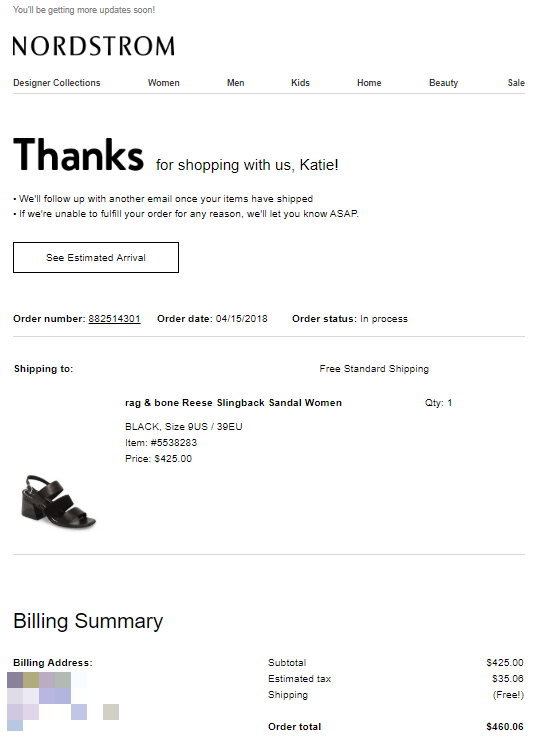
2. Order, shipping, and delivery confirmations
These are the most essential post-purchase emails because they remind your customers what they bought, how much they paid, and where and when the products will be shipped. Too many marketers don’t give these important messages the special treatment they deserve.
Order
A memorable confirmation email needs two things: One is key information, such as product names, photos, prices paid, quantities, payment source and shipping addresses, along with phone numbers and links for customer service or support. These reassurances make your customers more confident about shopping with you.
ShippingEasy makes this email easy, letting your customer know their order is being processed and soon will be shipped! Simply select from our Customer Marketing automated emails, the “Order Downloaded” email template. ShippingEasy can even add product recommendations to this email for you!
The other essential part of an effective order is what you see below: a friendly, reassuring tone that reflects your brand voice: “Mission accomplished.” “Nice ordering skills.” “You did it. Look over your details and make sure we got them right.” All of these establish a brand voice and familiarize the customer with what it’s like doing business with you.
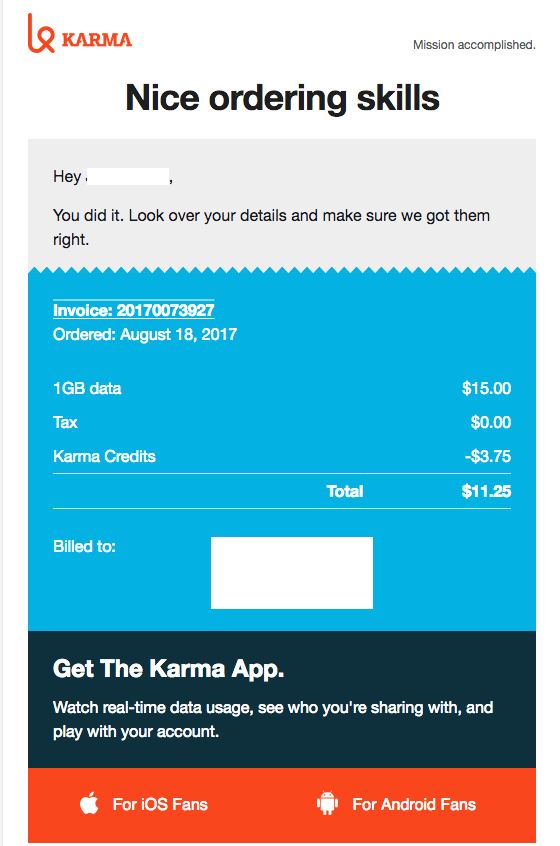
Shipping
The shipping confirmation email below features purchase details, tracking information, and another ‘thank you for your business’ message. It’s mostly plain text, so a tappable button for the tracking could have been helpful here.
The other essential part of an effective shipping confirmation email is what you see below: a friendly, reassuring or congratulatory tone that reflects your brand voice: “Your order is on its way…Hooray!” This helps inform the customer of the status of the shipment. An added touch is providing easy and tap friendly tracking to help the customer follow their package’s progress.
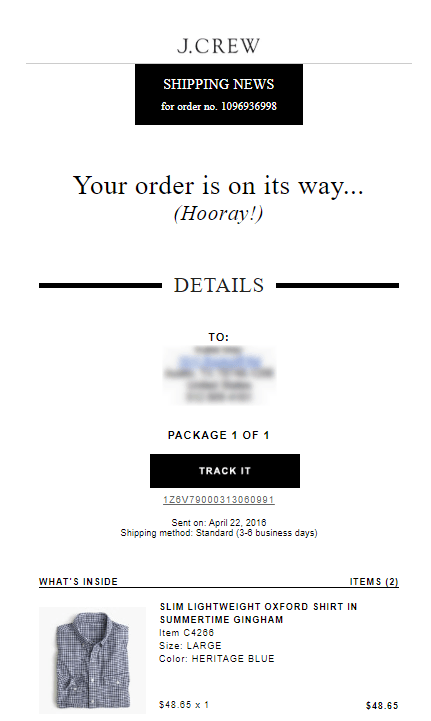
Automation rules can help you time your messages to be most relevant. For example, ShippingEasy’s automated “Request Feedback After Delivery” email allows you to set a campaign rule that chooses the wait time to send an email. Since every item has a unique timeframe after receipt to be able to provide quality feedback, you can customize when the email fires off to be a time that makes sense. For the above example of a book, it’s not likely that you could get a book review in a matter of days from most people, so you’d want to time that out further.

Delivery confirmation
This is the newest twist on the reassurance theme, reflecting the reality that people who order things are not always home to receive them. The Nordstrom email below gets sent right after the delivery service drops off the package, thanks to the use of the portable barcode scanner.
We like this message because it’s very straightforward. It creates the sense of excitement immediately in the headline, reminds the customer what they bought, and lets them know Nordstrom is available to contact if there are any issues.
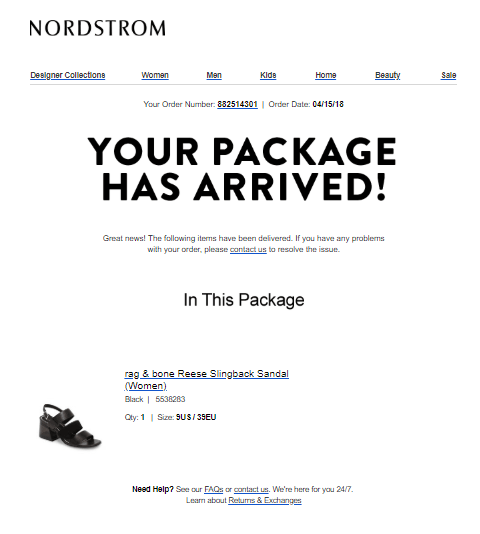
If you wish to send your delivery confirmation email a bit further out after the customer’s order has been delivered, you can do that as well. While some products and brands might warrant real-time email delivery and communication, you might have a different goal for your products and brand.
Some store owners tie their delivery confirmation emails to the goal of getting feedback, such as asking “How did we do?” The “Request Feedback After Delivery” automated email in ShippingEasy’s Customer Marketing platform mentioned above allows you to do this. All you have to do is set when you want this email to go out after delivery!
<H3<3. Product Recommendations
The first order is just the beginning. Any emails you send post purchase should guide your customer further down the funnel and encourage more purchases and loyalty. One excellent way to drive loyalty is to show your customers you “get” them by recommending other products they’ll love.
The below email from Nordstrom uses a combination of images, descriptions, social proof (“Everybody loves…”), and a prominent call-to-action button to encourage a repeat purchase. The bold-lined callout box draws the eyes to these products as well.
This is just one example, though. You don’t have to include recommended products in a delivery email if you would rather follow up with a stand alone email instead. Test both approaches and see what works best for converting your customers.
Quality product recommendations will increase satisfaction with the purchase and confidence in both your product and your own knowledge and expertise. Your customer will come to understand why it’s better to buy from you than from someone else.
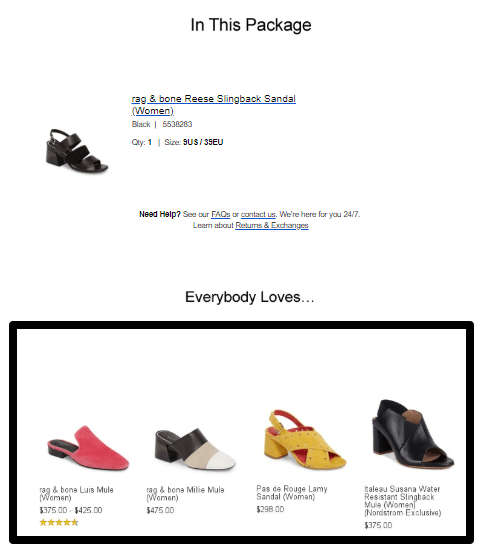
4. Requests for product reviews
Why has the customer-review request become a standard email in the post-purchase process? Because customers use them. These stats from Inc. show you how popular reviews have become:
- 85% of consumers trust online reviews as much as personal recommendations
- 91% of consumers read online reviews regularly or occasionally
- 68% of consumers form an opinion after reading one to six reviews
With customer reviews, timing is everything. We’ve seen brands ask for reviews on the order-confirmation page, which seems like jumping the gun. Plus, it takes a key email out of the post-purchase sequence. Give your customer a chance to try out the product before sending a review request.
The Ulta email below follows some other best practices for review requests: it includes the product image and description. It sets the stage for a positive review with the words “Did you [love] it?” The link for each product goes directly to a review page. The email also is branded with Ulta’s logo and brand colors and invites the buyer to promote the product on social media with a photo and official hashtag.
One thing missing: a quick “what’s in it for me?” note, telling the buyer why she should review the product and how much time it will take.
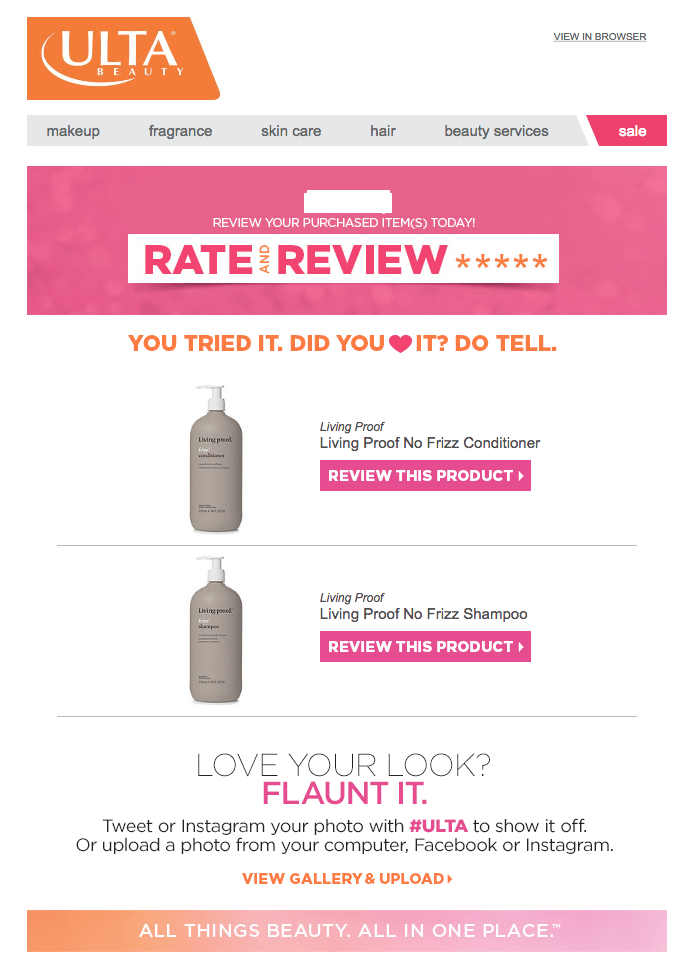
Reviews not only help customers make decisions but also help tell you, as a store owner, what to continue carrying in your inventory. It’s easy to set this feedback request on autopilot with a cadence that makes sense for your products.
By turning on the automated “Product Review Request” campaign in ShippingEasy’s Customer Marketing email platform, you can set it and forget it. This way, you’ll never forget to email your customers asking for feedback, helping both you and your customer make smarter decisions at the end of the day.
5. The replenishment/reorder reminder
These emails are perfect if you sell consumable products, especially those with short shelf lives like food, beverages, cosmetics, vitamins, personal and baby care, printer ink, and the like.
They extend the post-purchase series beyond the first few days or weeks after purchase. They differ from other post-purchase emails because they trigger automatically based on when you expect a buyer would be back in the market.
The pharmacy chain CVS sends out replenishment emails for its store purchases. The email below uses data from customers’ ExtraCare loyalty cards, such as name, partial card number and product images, to populate each triggered email. This makes the emails highly relevant. Tossing in a price incentive and a link to the store’s weekly ads can increase a shopper’s interest in buying.
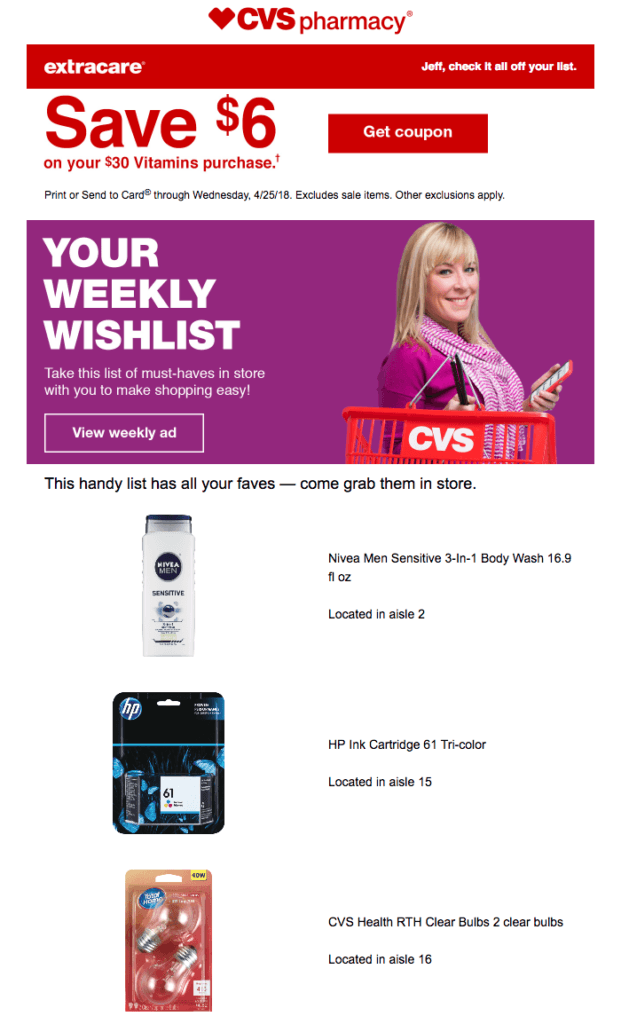
Wrapping up
Post-purchase emails can help a brand strengthen its customer relationships and bring customers back to buy again and again. Take care to make each email as relevant as possible, giving customers plenty of detail and reassurances about their purchases and doing business with you.
One last note: We didn’t forget about one of the best post-purchase emails you can send if you want to increase repurchasing: the product-recommendation email. That’s because we covered this high-performance message in a previous blog post: The top 5 most effective e-commerce email campaigns.
We invite you to check it out to learn more about post-purchase emails and how ShippingEasy’s Customer Marketing platform can help you generate reviews, build product awareness, and increase repeat business.
Jack Ship
Latest posts by Jack Ship (see all)
- E-Commerce Shipping Solutions You Should Consider for Your Site - February 28, 2021
